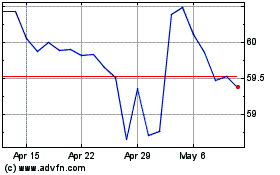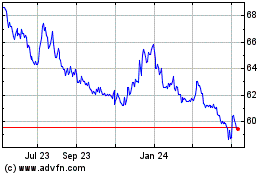Currency markets saw an eventful 2013 with the dollar spiking,
emerging markets currencies sliding, the yen setting multi-year
lows every now and then and the Euro gaining and losing strength
with every move by the central bank..
A big reason for this movement in the world currency market was the
taper talk in the U.S. that came into the picture in May and the
ilikely mpact of the taper on emerging market capital flows. Also,
huge monetary stimulus in developed markets like Japan and the U.K.
as well as the Eurozone regulated the fate of theer respective
currencies.
Let’s see how things are shaping up as we approach the New
Year.
Finally Taper Hits & the Dollar Gains
After months of speculation, the Fed has finally decided on a
modest tapering (worth $10 billion per month) from January 2014.
The Fed chairman, Ben Bernanke commented that the bond buying
program will be curtailed in phases in 2014 if improvement in the
labor market matches their expectations, and may finally end by
late 2014 (read: Fed Tapers Bond Purchases: 3 ETFs in Focus on the
News).
The greenback climbed the day immediately after this announcement
(on December 18) and is expected to move higher in 2014 again a
basket of varied currencies. Not only the gradual withdrawal
of the Fed’s monetary stimulus, but also the steady U.S. economic
growth will likely spur the value of the greenback.
In fact, last year the PowerShares US Dollar Bullish Fund (UUP)
moved sideways in a very tight range of $21.32–$22.98 per share.
From a technical viewpoint, its short-term moving averages have
presently outpaced the long-term ones. Also, its relative strength
index of 55.99 suggests that the fund is way behind the overbought
territory. UUP currently holds Zacks Rank #2 (Buy).
Volatile Ride of the Euro
Meanwhile, Euro stumped investors and analysts by gaining strength
against the dollar and reached to its 2-year high as of December 27
primarily after European Central Bank governing council member Jens
Weidmann cautioned that keeping interest rates low may endanger
political reforms.
Eurozone returned to growth in Q2 after a two-year acute debt
crisis and inflation eventually picked up in the region. This has
helped drive this single currency to some extent.
Moreover, some experts believe that the strength in euro emanates
from some year-end factors which include liquidity crunch in the
euro zone as European banks are repaying crisis loans to the
European Central Bank which in turn raised short-term interest
rates and the currency.
As a result,
CurrencyShares Euro Trust (FXE) –
designed to reflect the price of the Euro in USD – gained 1.21%
over the last one-month period (as of December 27). However,
investors should be extra cautious before adding long positions in
the Euro as the euro zone recovery is still far from reaching the
desired level and the region might need stimulus in the coming days
putting a strain on Euro. On the contrary, USD will likely shoot up
with each measured QE withdrawal thus marring the appeal of Euro
next year (read: Short the Euro with These Inverse Currency ETFs).
Notably, FXE currently has a Zacks Rank #5 (Strong Sell).
The Surge in the British Pound; Will it
Continue?
The British Pound Sterling has been awaiting a turnaround for the
past few months and finally seems to have got a boost from stronger
economic recovery in the U.K. which in turn spurred the speculation
about the central bank’s less accommodative monetary policy ahead
of the anticipated timing.
This has provided some relief to the struggling currency with the
CurrencyShares British Pound Sterling Trust ETF
(
FXB) – designed to track the performance of the
British Pound Sterling – adding 1.15% over the last one month. FXB
is currently hovering near its 52-week high price with the pound
jumping to the highest level in two years against the dollar.
Citigroup currently considers Sterling as a global “safe haven”
currency in 2014.
Here also we would like to highlight some concerns. Of late, the
BOE has decided not to consider a rate hike until the unemployment
rate falls to 7% from its current 7.6% indicating that the time to
cheer for the British pound is yet to come. In any case, FXB has a
Zacks Rank #5 (Strong Sell).
Slide in the Yen to Continue
The most talked currency fact this year was a depreciating Japanese
Yen. Thanks to the Bank of Japan (BOJ)’s targeted measure to end a
long-stretched deflationary rut and trigger growth, Yen is now
trading at its 5-year low level.
The Bank of Japan follows a policy to increase the country’s
monetary base at an annual run of about 60–70 trillion yen. This
injection of artificial liquidity – which will continue until the
inflation target reaches 2% – devalues the Japanese Yen.
Consequently,
CurrencyShares Japanese Yen Trust
(
FXY) lost 2.89% over the last one month and 17%
in the year. FXY currently carries a Zacks Rank #4 (Sell).
In fact, FXY hit a fresh 52-week low of $92.88 on December 27. With
the Fed taper already decided on and the BOJ’s stimulus still in
place, the Yen will likely lose more strength relative to the
greenback in the coming days.
Emerging Market Currencies: the Real Loser
The going was extremely tough for emerging market currencies this
year with the
WisdomTree Emerging Currency Fund
(
CEW) shedding 5.45% this year. The firmness in
dollar and a general risk of trade led to this malaise. The crisis
became more acute with countries having large current account
deficit – such as Indonesia and India. In fact, Indian Rupee was
the second worst performing emerging markets’ currency in 2013,
plunging more than 10% against the dollar.
Though the majority of the emerging markets have already priced in
the initial taper shock and are not likely to see much volatility
in the initial part of 2014, these currencies should witness a
major setback in the latter half of the year as the Fed speeds up
the QE pullback. Hence, its better to stave off emerging markets’
currency exposure in 2014 (read
: 3 Currency ETFs
Crushed in Emerging Market Rout
).
If investors at all seek a touch of EM currency in their 2014
portfolio, Chinese Yuan could be an intriguing option for them.
Market Vectors Chinese Renminbi/USD ETN
(
CNY) has added 3.1% in YTD frame braving the
taper fear while
WisdomTree Dreyfus Chinese Yuan
(
CYB) fell only 0.43%.
Yuan became the second-most used currency in international trade
after the U.S. dollar leaving behind the Euro and Yen. The rising
use of the yuan, also known as renminbi led to a higher demand for
the currency thus pushing up its price. Both the above-said
Yuan products presently carry a Zacks Rank #3 (Hold).
Bottom Line
In a nutshell, the greenback will rule the year 2014. Apart from
the dollar, no other currency is promising outright appreciation
relative to the USD. Only investors having long positions in
Chinese Yuan, Canadian dollar and Euro can take a wait-and-see
approach.
Want the latest recommendations from Zacks Investment Research?
Today, you can download
7 Best Stocks for the Next 30
Days.
Click to get this free report
>>
WISDMTR-EMG CUR (CEW): ETF Research Reports
MKT VEC-RENMINB (CNY): ETF Research Reports
CRYSHS-BRI PD S (FXB): ETF Research Reports
CRYSHS-EURO TR (FXE): ETF Research Reports
CRYSHS-JAP YEN (FXY): ETF Research Reports
PWRSH-DB US$ BU (UUP): ETF Research Reports
To read this article on Zacks.com click here.
Zacks Investment Research
Want the latest recommendations from Zacks Investment Research?
Today, you can download 7 Best Stocks for the Next 30 Days. Click
to get this free report
Invesco CurrencyShares J... (AMEX:FXY)
Historical Stock Chart
From Dec 2024 to Jan 2025

Invesco CurrencyShares J... (AMEX:FXY)
Historical Stock Chart
From Jan 2024 to Jan 2025
